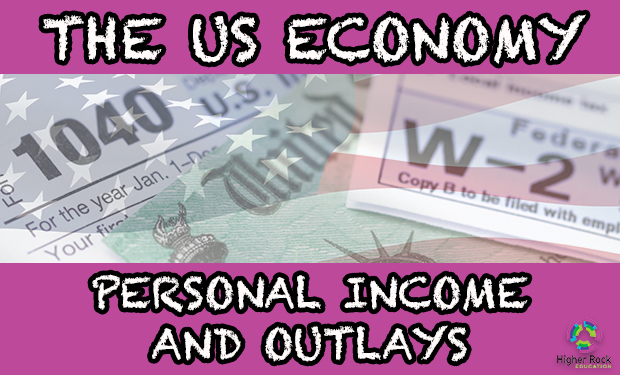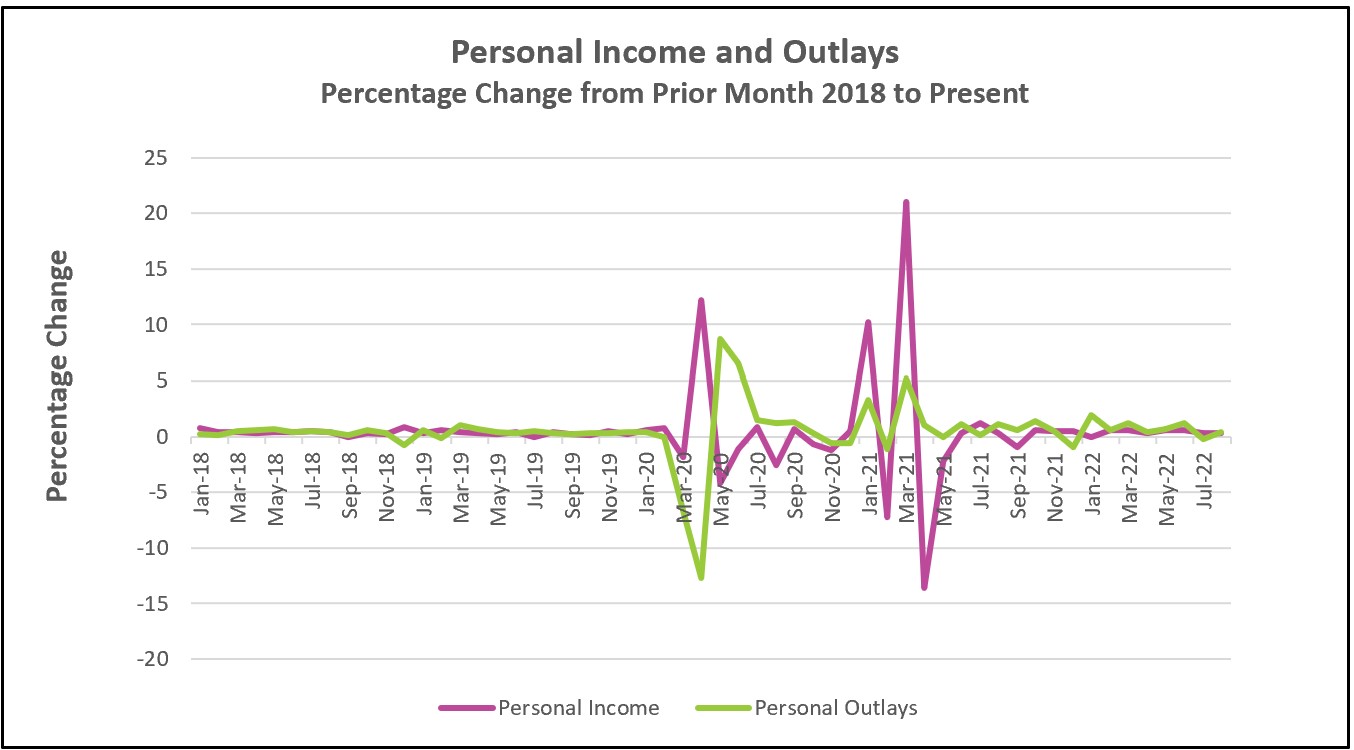
Earlier this month, the Bureau of Labor Statistics reported that the consumer price index rose 8.5%. Today’s Bureau of Economic Analysis report confirms inflation is a problem and also suggests that the problem is well entrenched, amplifying the Federal Reserve’s challenge to control inflation. Unfortunately, the data implies greater hardship in the future.

The highlights of the Bureau of Economic Analyses’ full report Personal Income and Outlays – August 2022 are listed below.
The US economy remains resilient and shows few signs of slowing down, even following five rate increases by the Federal Reserve. Consumer spending comprises approximately 70% of the US economy, and remains the economy’s greatest strength, but it has also contributed to inflation. It rose in August even after adjusting for inflation. Personal and disposable incomes also increased, but wages increased at the slowest pace since January – news the Federal Reserve policymakers welcome because continued strength in income and consumer spending cultivate a higher price level.
August’s inflation rate fell 0.2% over the prior 12 months. However, the monthly gain increased. Falling gasoline prices were the most significant contributor to the fall. The core index rose on both a monthly and annual basis. Economists consider the core index a more reliable barometer of prices because it strips out volatile food and energy prices.
Federal Reserve policymakers understand the hardship inflation poses on lower-income households, especially when prices for necessities such as food and shelter rise at a faster clip than disposable income. Disposable income barely kept pace with inflation in August and increased less than food and shelter. Chairman Powell clearly stated policymakers’ intention of continuing to push up interest rates until inflation subsides – even if it results in additional adversity. Their benchmark for the PCE price index is 2%. August’s rate equaled 6.2%. They have a long way to go, and continued strength in consumer spending and the job market will force the Fed to become more aggressive in pushing rates higher. But policymakers have a tricky balancing act because higher rates, especially when they have been increased over a short time, increase the likelihood that the economy will return to a recession.
There is some evidence that higher interest rates are beginning to reduce demand. Sales have slowed in interest-sensitive goods such as cars and real estate. The National Association of Realtors reported that existing home sales fell 0.4% in August. It was the seventh consecutive month sales have fallen. A combination of higher home prices and higher mortgage rates has reduced the affordability of home ownership. In addition, many homeowners with a low mortgage rate have delayed selling their homes, thereby reducing the inventory of homes – which helps prevent home prices from falling. CarMax recently reported a 50% drop in second-quarter profits. The company cited inflation and higher interest rates making cars less affordable.
Instead of large ticket items, consumers have increased their purchases of services, particularly health care, transportation services, and rent. Higher wages have helped pay for the spending increase. However, wages increased 0.3% in August, the smallest increase in 2022. Households have continued to dip into their savings and use their credit cards to finance their purchases, making continued growth in consumer spending unsustainable. Savings rates continue at near record lows.
The future trend in consumer spending will determine the economy’s path toward recovery. Will higher interest rates cut the aggregate demand enough to stifle the recovery? Will a tight labor market continue to push incomes higher, making the policymaker’s job to contain inflation more difficult? We will get some inkling of employer sentiment and employment when the Bureau of Labor Statistics releases the Employment Summary for September on October 7th. Check back to HigherRockEducation.org for our summary and analysis of this important data.